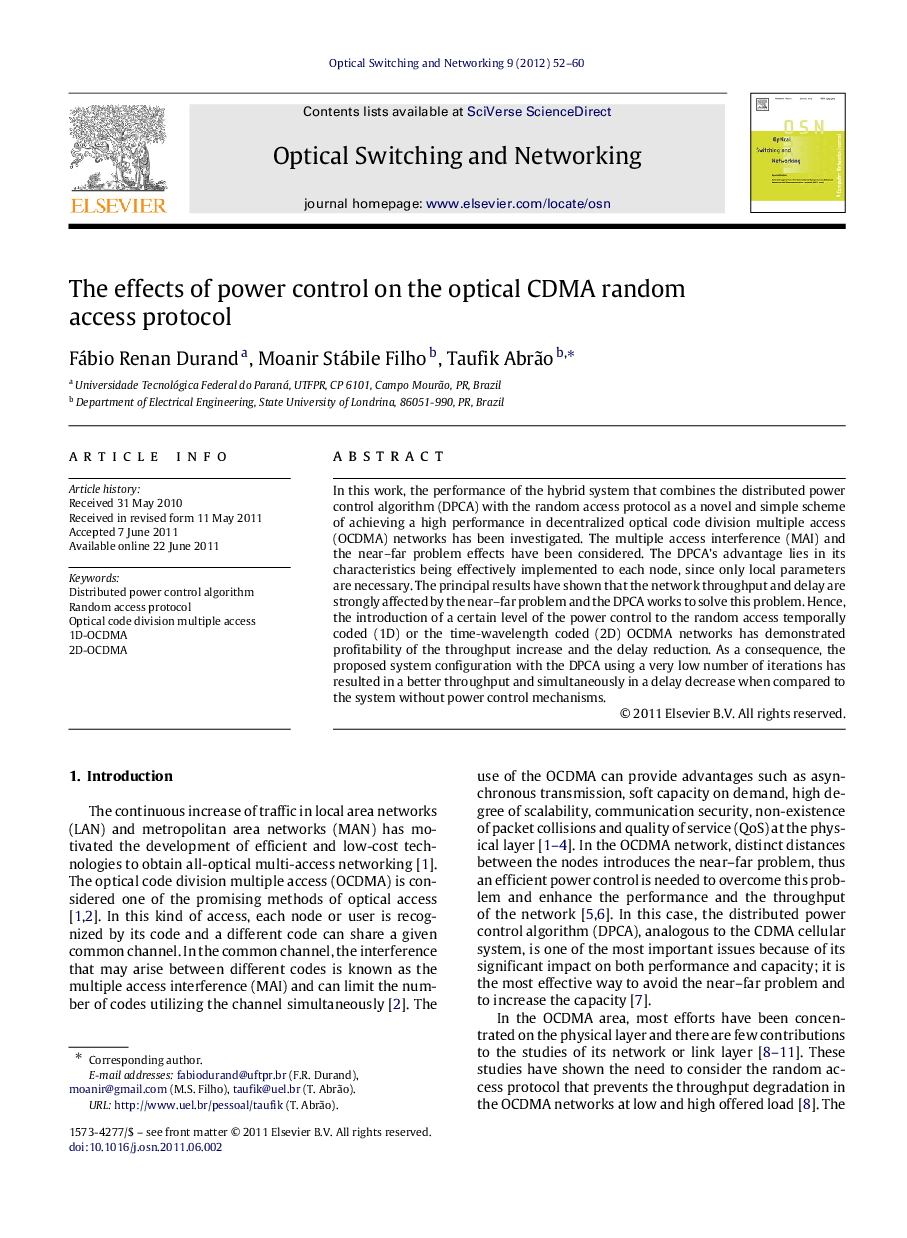| کد مقاله | کد نشریه | سال انتشار | مقاله انگلیسی | نسخه تمام متن |
|---|---|---|---|---|
| 463626 | 697158 | 2012 | 9 صفحه PDF | دانلود رایگان |

In this work, the performance of the hybrid system that combines the distributed power control algorithm (DPCA) with the random access protocol as a novel and simple scheme of achieving a high performance in decentralized optical code division multiple access (OCDMA) networks has been investigated. The multiple access interference (MAI) and the near–far problem effects have been considered. The DPCA’s advantage lies in its characteristics being effectively implemented to each node, since only local parameters are necessary. The principal results have shown that the network throughput and delay are strongly affected by the near–far problem and the DPCA works to solve this problem. Hence, the introduction of a certain level of the power control to the random access temporally coded (1D) or the time-wavelength coded (2D) OCDMA networks has demonstrated profitability of the throughput increase and the delay reduction. As a consequence, the proposed system configuration with the DPCA using a very low number of iterations has resulted in a better throughput and simultaneously in a delay decrease when compared to the system without power control mechanisms.
► Power control for ALOHA OCDMA networks has been investigated.
► 1D- and 2D-code ALOHA OCDMA networks performance have been put into perspective.
► Network BER performance is strongly improved under the distributed power control.
► Power control has resulted in BER improvement at cost of low additional complexity.
► Power controlled 1D-OCDMA has performed as well as 2D-code without power control.
Journal: Optical Switching and Networking - Volume 9, Issue 1, January 2012, Pages 52–60